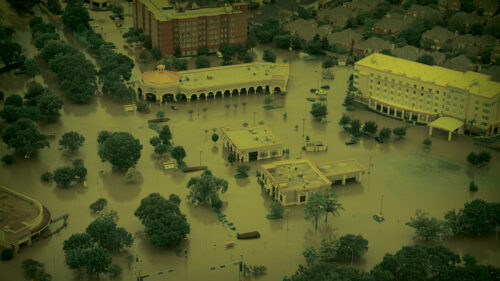You’ve likely seen the devastation on news reports and through social media. Hurricane Harvey and Irma both took a heavy, damaging toll on homes and businesses throughout the areas the hurricanes hit….and other hurricanes are following. Massive flooding is affecting many cities, and the dollar amounts will soon start rolling in as to the monetary impact these hurricanes had and will continue to have for the foreseeable future.
Recently, the deadline for the National Flood Insurance Program (NFIP) was extended to December 8, 2017 (previously September 30, 2017). With this extension to December, President Trump approved raising the debt ceiling for the program and funding for the disaster relief efforts related to Hurricanes Harvey and Irma. That’s great news for those who need it, and upsetting news for others who are calling for reform of the program.
For those of you who aren’t aware of the ins and outs of the program…I want to give you a little background. The NFIP was created in 1968 and is the leading provider of primary flood insurance options for businesses and homeowners located in high-hazard or “Zone A” flood areas. Zone A areas are characterized as locations that can expect a catastrophic flood event every 100 years or less. The NFIP is backed by the Federal Government, but sold through insurance carriers and agents.
The NFIP is meant to help those who need it most; however, the program has nearly 5 million policy holders and pays out more than it collects in premiums each year, running at a deficit. So, opponents are saying something needs to be done.
To add some figures to this:
- Right now, the NFIP is $24.6 billion in debt.
- Flood damage in the USA has exceeded $1 billion in all but 10 years since 1970.
- Flood damage has exceeded $5 billion more than 12 times.
Part of the reason is due to outdated flood maps — surveying that is provided by the Federal Emergency Management Association (FEMA) — and another reason is the continued building in coastal areas prone to storm surge. A recent article written during coverage of Hurricane Irma indicated that the population of Tampa, Florida, in 1921 (the last time a major hurricane hit) was 50,000. Today, it’s over 3,000,000.
I know, I know. You might be saying, but I don’t live in a hurricane-prone area, so this isn’t something I need to worry about. That may be true, but storms and flooding, no matter where you live, are always possible. More than 4,000 high-hazard potential dams — with the potential to cause loss of human life — were identified as deficient in 2008, with fewer than 500 being repaired. FEMA has been redrawing maps the past several years, which may mean businesses and homeowners are now finding themselves located in a high-hazard area. Many banks and financing companies require that loans for property in high-hazard areas be protected by flood insurance.
So, with FEMA’s redrawing of lines, what can you do if you find you’re now in a high-hazard area? If you can provide an Elevation Certificate to underwriters showing your property elevation is above the flood elevation, underwriters will review this favorably in how they underwrite the risk…possibly providing higher limits, lower deductibles, at more favorable premiums.
Additionally, feel free to reach out to us. This can be a very confusing topic. Many people and businesses aren’t sure if flood insurance is necessary. That’s where we can assist. Holmes Murphy can help you identify your flood risk and find options for your home or business. We can also help with disaster planning strategies and put together insurance solutions outside of the NFIP. We’ll be watching closely to see what happens with the NFIP and if this will impact any of our clients. We’ll be sure to let you know. In the meantime, don’t hesitate to call or email us!







